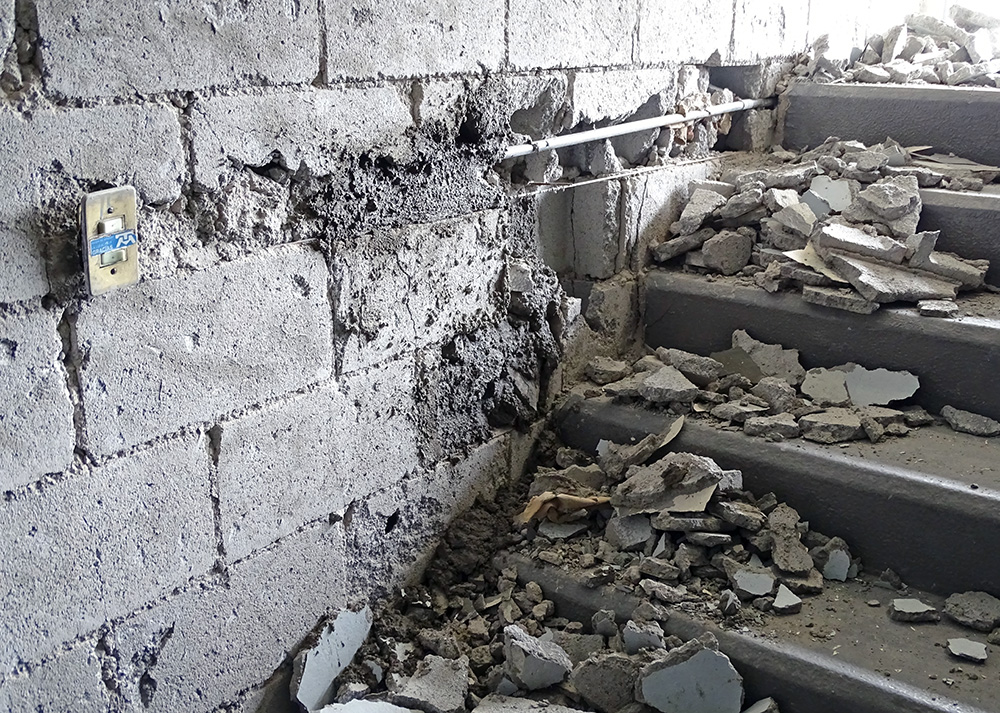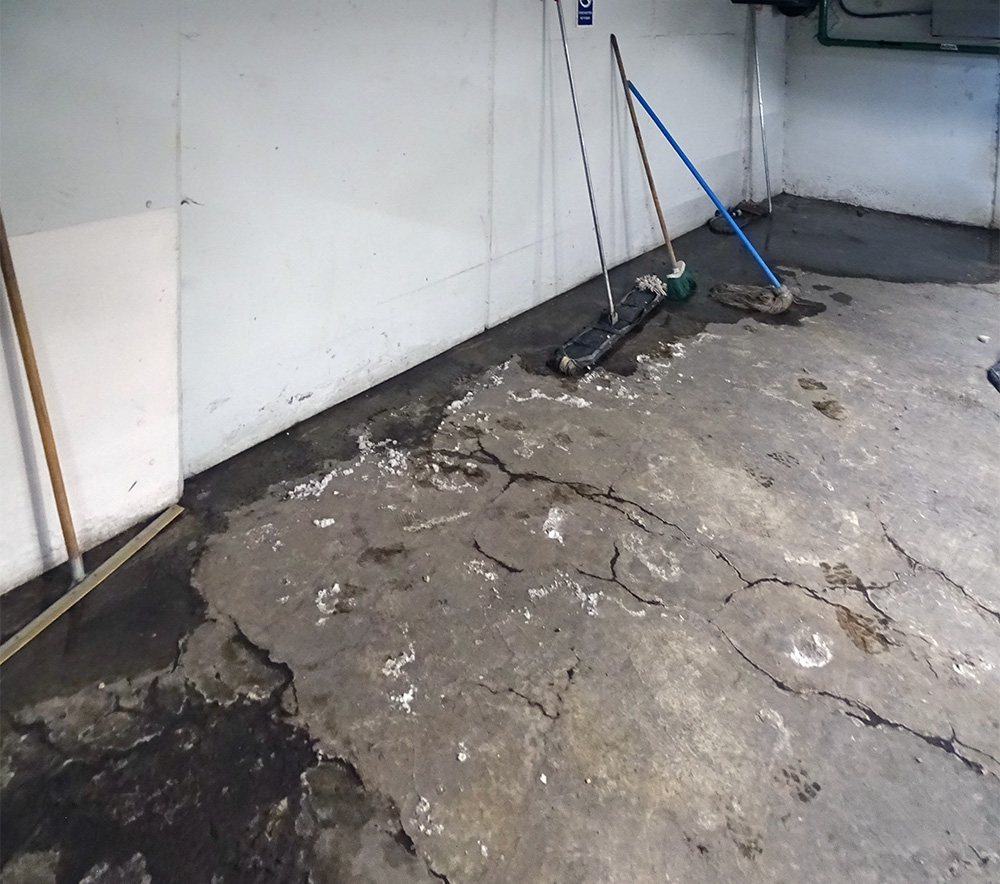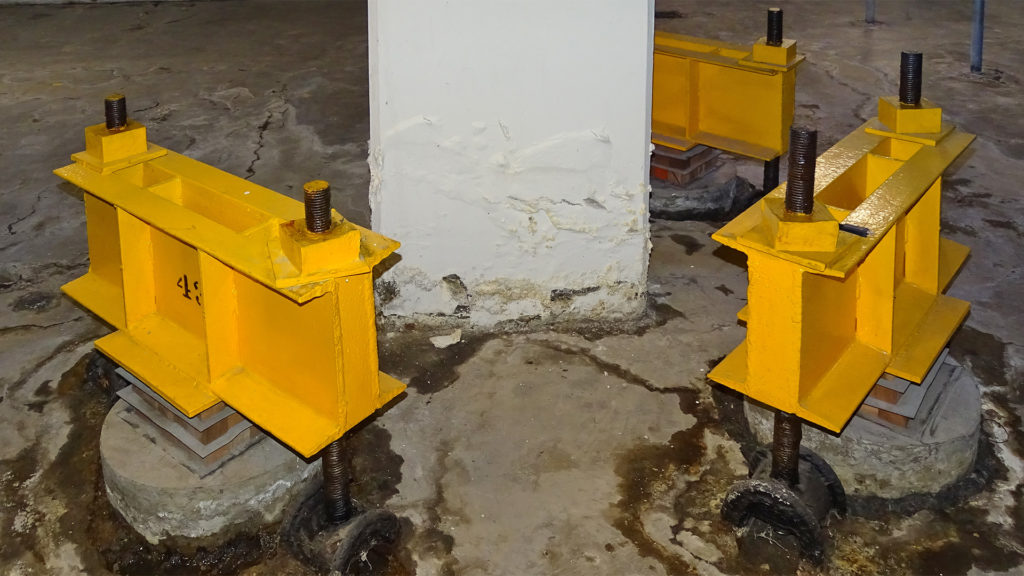Day 11 (Wednesday, October 4, 2017).
Yesterday, on our way to Jojutla, we briefly stopped in the Coapa area and observed some damage before moving on. Today, we decided to return to the area to see what else we could find. During our walk through Coapa, we observed a concentration of damaged low-mid-rise commercial and residential buildings; however, it was the Telmex telecommunications building located on Avenida Division del Norte that stood out the most in our observations.

We arrived at the building by chance – we just happened to be walking up that street. The building is an 8-story, plus penthouse, reinforced concrete frame structure with masonry infill. Once we realized the building was a telecommunications building, we knew we had to get in and see how it performed during the earthquake since it is a vital part of a critical lifeline. The personnel on site were fantastic and were happy to show us around. They informed us that all forms of telecommunications were provided from the facility, such as phone; internet; and emergency, or 911, service. From the outside, the building looked relatively solid, with only some damage visible. The structural damage observed throughout the building was primarily within the CMU infill in the stairwell, which obstructed an emergency egress route; CMU infill at a perimeter 2nd story office; and the canopy at the entrance of the storefront. We were surprised to hear from personnel that there was no break in service. Further, the only interruption for the building was a water line break (both inside the building and from the utility service) that temporarily flooded the basement level. The personnel’s response to the facility’s water loss is where the story of resilience comes into play.


According to the personnel, the telecommunications equipment within the facility requires a significant amount of cooling. The cooling process requires water service, which was lost. The personnel on site knew that service to the 911 center absolutely had to be maintained, so they sprang into action and began filling buckets with water from nearby homes in order to service the cooling system. Equally as commendable is the support that the neighbors within the community played by providing water to the Telmex personnel at a time when they also needed the water themselves. For three straight days, the Telmex personnel, with the assistance of their neighbors, made 20 – 25 trips per day to fill up 20-liter buckets of water in order to keep the 911 system going for the individuals who needed it. Truly a commendable and selfless effort by the community. The water line break was repaired after three days and all systems within the building were, and currently are, functioning once again.

Structural repairs to the CMU infill walls were ongoing during our visit. All other equipment within the facility appeared to be in good condition, including the rooftop mounted equipment. Our group was also happy to note the use of flexible coupling in the vertical pipes anchored on the façade of the building, which appeared to have performed well. In the basement, there was no standing water present. Interestingly, our group also noticed the use of adjustable piles as part of the foundation system in the basement. The personnel within the building informed us that the building settles approximately 2 cm per year and the piles have to be adjusted relatively frequently to offset the differential settlement and maintain the building’s elevation.


It was apparent that Telmex and the members of the community understood the important role communications play as a critical lifeline function. Their selflessness, quick and creative response, persistence, and resilience directly supported the continuity of the community’s emergency response (911) system.


